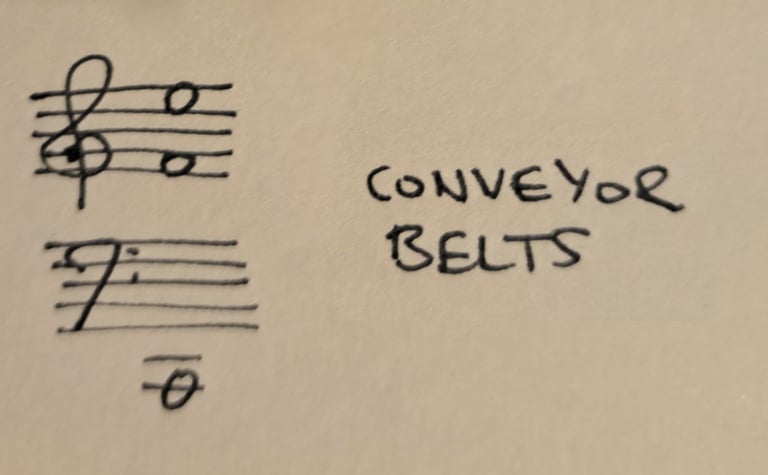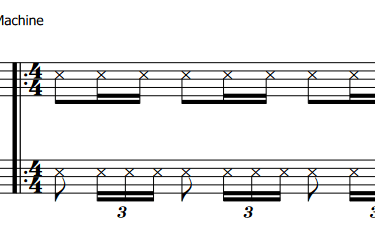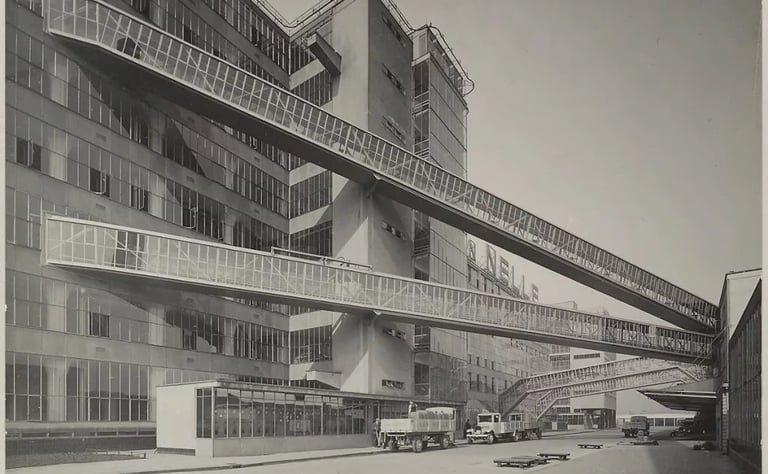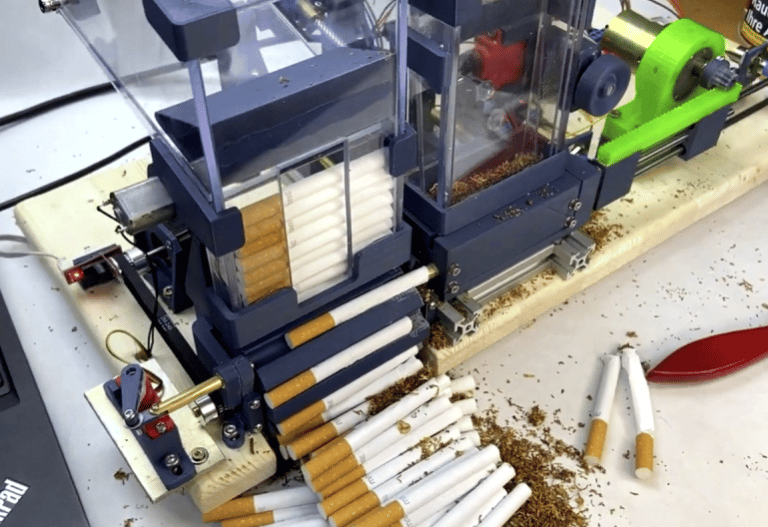Automation, Musicographics Van Nelle Factory/Rotterdam
In May 2024 I received an assignment from the Office for Metropolitan Information (OMI) as part of the Day & Night of Architecture program in Rotterdam. My commission was to create a site-specific composition for the Van Nelle Factory, one of the most iconic examples of modernist industrial architecture.
Murat Ali Cengiz
7/14/20243 min read
In May 2024 I received an assignment from the Office for Metropolitan Information (OMI) as part of the Day & Night of Architecture program in Rotterdam. My commission was to create a site-specific composition for the Van Nelle Factory, one of the most iconic examples of modernist industrial architecture.
Built between 1925 and 1931 by Johannes Brinkman and Leendert van der Vlugt, the Van Nelle Factory epitomizes the ideals of the New Objectivity movement: functionalism, minimalism, and transparency. Originally designed for processing coffee, tea, and tobacco, its pioneering use of steel and glass redefined industrial design and earned it the designation of a UNESCO World Heritage Site in 2014.
Our short concert was scheduled at the very top of the building, in the Tea House—a circular room with panoramic views of the Rotterdam skyline, stretching from Central Station to the Euromast, framed by the Schie canal and train tracks.
As I entered the factory, I was struck by the soft humming of machinery echoing through the stairwells. This sound grew louder as I climbed toward the Tea House, and I later borrowed it as a structural element for the composition. The final ascent through the spiral staircase into the Tea House proved equally inspiring: the circular room above rests directly on the stairwell, which acts as a resonant sound box. This unique acoustic suggested a spatial structure for the piece, where sound would move between floors and envelop the audience.
I titled the work Automation, conceived as a three-part narrative for guitar and trumpet performed by Prashant Samlal (prashantsamlal.com
The Factory — evoking mechanical sounds and drones.
The Factory and the Men — a dialogue of humans meeting the machine, full of irregular, out-of-sync gestures.
Automation — the merging of man and machine into a unified, rigid pulse.
The performance was curated as a spatial journey:
As the audience exited the elevator, they were immediately greeted by the guitar drone, already humming like a machine from the Tea House above.
Once inside, the guitarist expanded the harmonic field, developing layers from the drone while the panoramic view filled the room.
At the climax, the trumpet began to play from the floor below, the spiral staircase channeling the sound upward like a natural amplifier. As the trumpeter ascended into the Tea House, his playing fused with the guitar, and the piece ended with both instruments locked in complete synchronization.
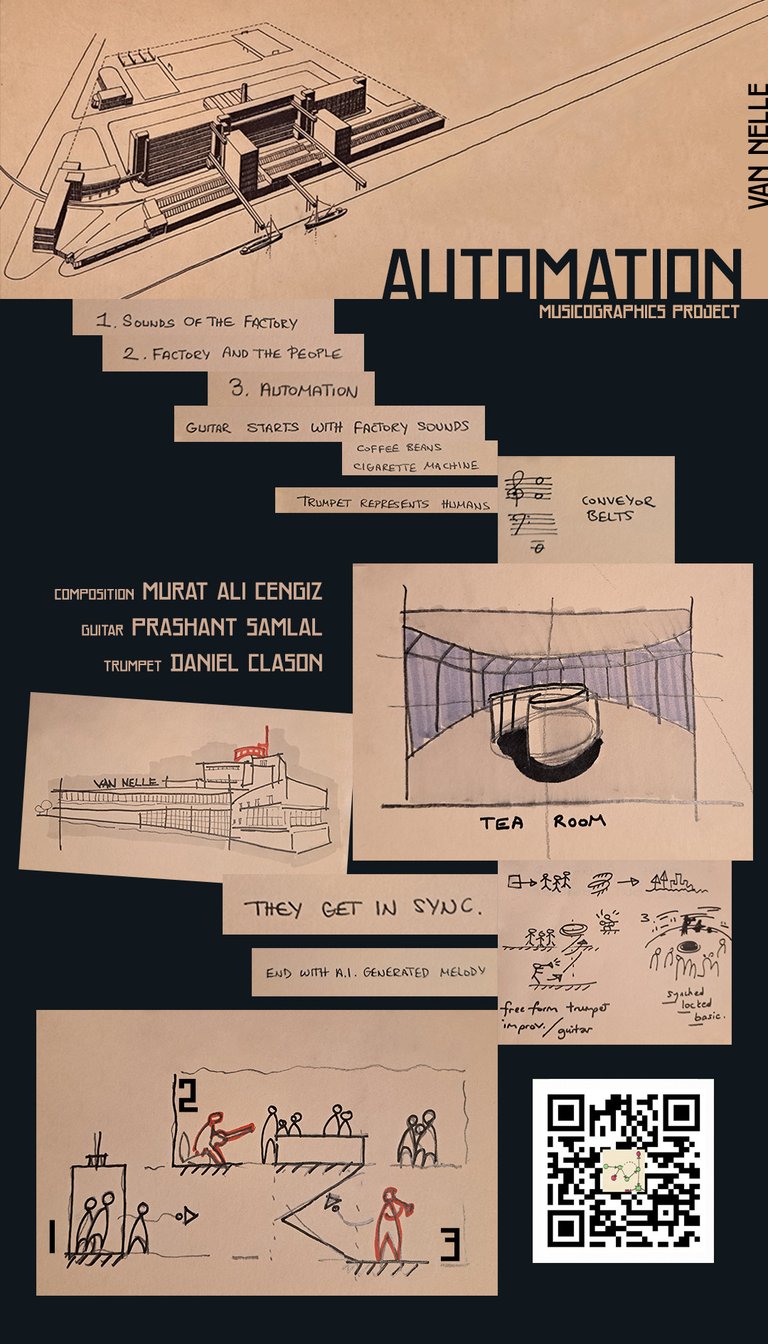

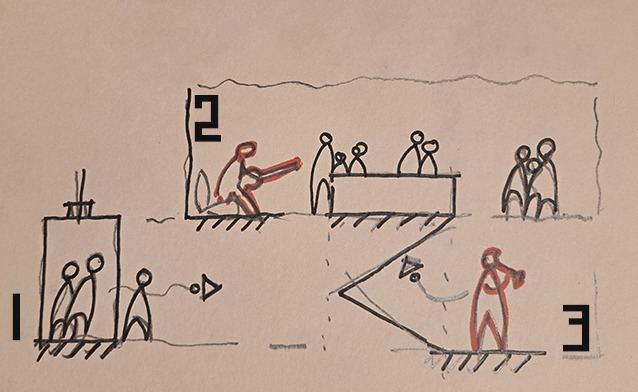

The first part drew on three characteristic factory sounds:
Coffee beans being poured (transcribed as percussive textures),
Conveyor belt hums (translated into a looping drone on guitar using pitches C–F–E),
Cigarette packing machines (mechanical rhythms worked into harmonic shifts).
From this base drone, the harmony evolved across the sections:
Cmaj7(add4) for the first,
Bb7sus2#11 for the second,
A7b13 for the final unification.
For the final section, I introduced an explicitly automated element: an AI-generated melody. Using ChatGPT 4.0, I asked for a basic phrase within D melodic minor (F–G–A–D). This melody became the closing gesture, underscoring the theme of automation not just in architecture and industry, but in composition itself.
Performed in the Tea House of the Van Nelle Factory, Automation was both a concert and a reflection on industrial modernism, a dialogue between machine sound and human presence, set against one of Rotterdam’s most extraordinary views.
